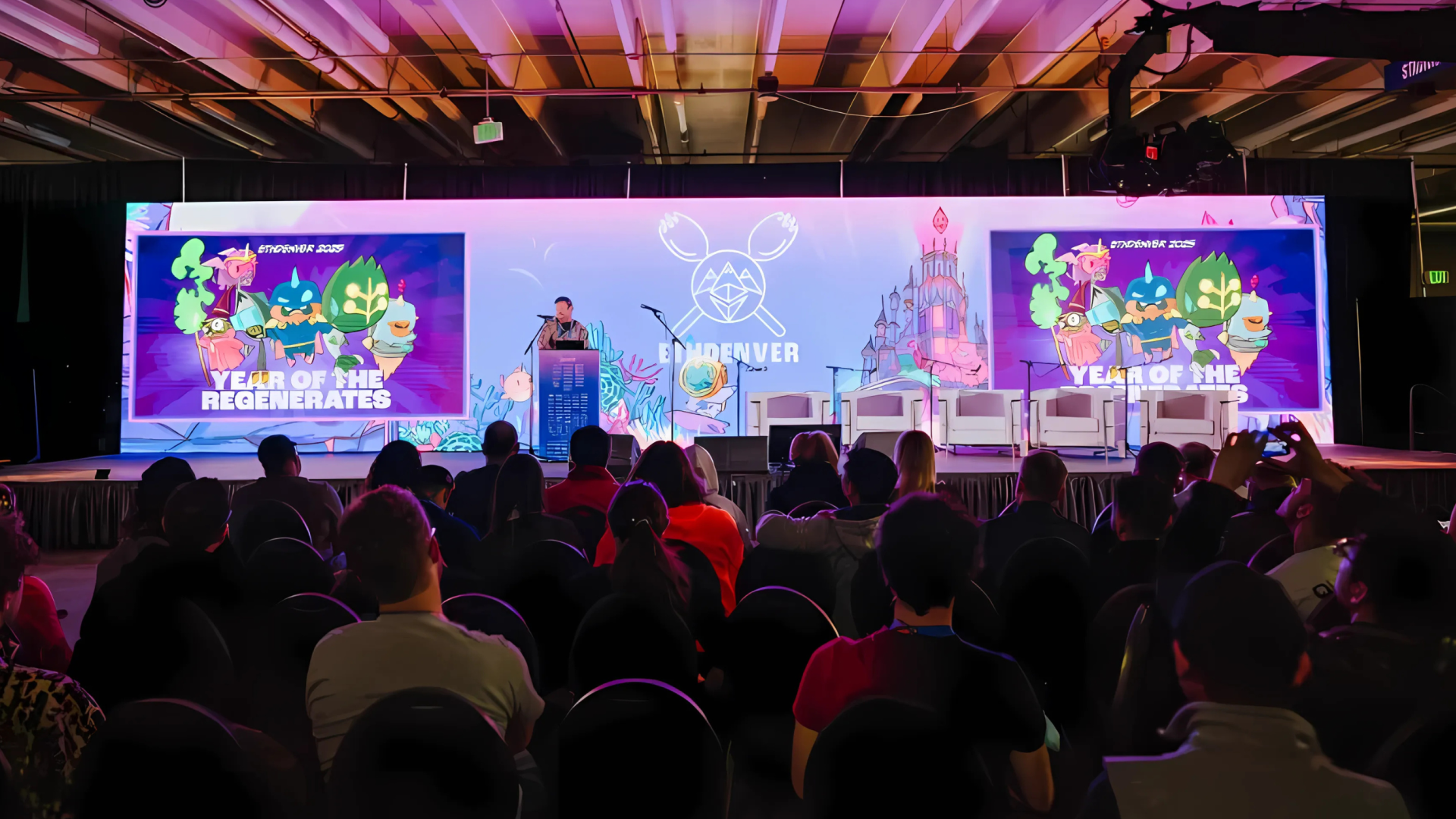Polkadot Bridges: Connecting the ecosystem with external blockchain networks
Web3, the next generation of the internet, has been envisioned as a fully functional and user-friendly web where our identity and data are our own. Polkadot was created with the belief that no single blockchain can do everything. Instead, the future is multichain.
 By Polkadot•March 16, 2021
By Polkadot•March 16, 2021
Updated March 4, 2025: This blog post may contain outdated information. While the core principles of Polkadot's multichain vision remain relevant, advancements in Polkadot's technology, bridges, and interoperability solutions may have occurred since its publication. For the latest updates, visit The Landscape of Trustless Bridges on Polkadot or refer to the most recent developer documentation.
Web3, the next generation of the internet, has been envisioned as a fully functional and user-friendly web where our identity and data is our own – safely secured from any central authority thanks to decentralized blockchain technology. In line with this vision, Polkadot was created with the belief that no single blockchain can do everything; that rather, the future is multichain.
However, as the number (and often the size) of blockchain networks continues to grow, they remain largely cut off from one-another, like islands with their own communities and economies that can’t exchange information or value with the outside world. The siloed nature of today’s blockchain networks goes against the principle of decentralization and reflects the Balkanization of the existing centralized Web2 world.
What are bridges and why are they important?
A blockchain bridge is a connection that allows the transfer of tokens and/or arbitrary data from one blockchain network to another. Both chains can have different protocols, rules, communities and governance models, but a bridge provides a compatible way to interoperate securely on both sides.
There are many different designs for bridges, but they can generally be divided into two camps: more centralized bridges that rely on trust or federation, and so-called “trustless” bridges that are more decentralized. Centralized bridges rely on some type of central authority or system to operate, meaning that users are required to place trust in a mediator to use a given app or service.
By contrast, trustless bridges are those in which users don’t have to place trust in a single entity or authority but rather place trust in the mathematical truth built into the code. Trustless interaction is enforced by the technology (and/or incentive mechanism) behind the system rather than by a promise or legal agreement.
Polkadot was designed as an underlying infrastructure to realize the kind of scalability, interoperability, and security needed to enable the multichain future, allowing diverse layer-1 parachains to interact and communicate with each other within the ecosystem. But Polkadot also allows parachains and external networks like Bitcoin or Ethereum to interoperate via bridges. Several bridges have already been developed or are currently being developed to connect Polkadot with such external networks. Because Polkadot was designed to minimize mediation in digital systems, trustless bridges are generally preferred within the ecosystem.
A practical example of bridging
As a practical example of bridging, consider a decentralized marketplace for insurance. One way to build this on Polkadot would be by deploying a specialized insurance parachain that acts as a marketplace for buyers and sellers of insurance. Assume that Polkadot also contained an oracle parachain that brought external data on-chain, as well as an Internet of Things (IoT) parachain that aggregated information from off-chain IoT devices.
In a situation where you purchased flight delay insurance, the policy could be constructed in such a way that it would pay out if both the oracle parachain confirmed that your flight was delayed and the IoT parachain confirmed that you were at the airport on time for your flight. On-chain, if the insurance parachain received a signal from both the oracle and IoT parachains then it could use an Ethereum bridge to trigger a transaction using a stablecoin, such as Dai, from the insurance company’s account to the policy holder’s. This is a relatively simple example of the power of interoperability.
Polkadot is designed for such a future, in which we will not only see applications that primarily live on one network and occasionally leverage other networks for simple transactions, but also applications that actually go much further than this and live across different blockchain networks that have varying degrees of specialization. High-quality bridging brings us one step closer to this future.
Bridging Substrate-based Chains
The Substrate blockchain-building framework can be used to build both parachains (when coupled with the Cumulus consensus engine) and solo blockchains with their own consensus and security. While parachains, which are connected to and secured by the Polkadot or Kusama Relay Chain, are first-class citizens of the ecosystem, Substrate-based solo chains can also connect to and communicate with ecosystem parachains using bridges.
A generic bridge that can connect Substrate-based chains is currently being built by the Parity team. This bridge consists of multiple components that together enable bi-directional communication between a standalone Substrate-based chain and a Polkadot parachain, or between two independent Substrate-based chains. In particular, such a bridge would enable interactions between the Polkadot and Kusama networks. The progress on Parity’s trustless bridging can be followed in the Parity Bridges repository.
Bridges Supported by Web3 Foundation Grants
The Web3 Foundation grants programs have supported the development of many bridges to the Polkadot ecosystem, including the following:
- Interlay is building a trustless bridge from Bitcoin to Polkadot. Currently, at the beta testnet phase, it will allow users to mint 1:1 Bitcoin-backed assets onto Polkadot as PolkaBTC. PolkaBTC can be used with any application or parachain within the Polkadot ecosystem just like a native asset, unlocking BTC liquidity for Polkadot’s DeFi. Under the hood, PolkaBTC implements the XCLAIM protocol, which makes the bridge financially trustless, permissionless, and censorship-resistant. The PolkaBTC incentivized Beta testnet went live in late February with a major UX revamp. In parallel, PolkaBTC is being audited by NCC and Interlay has started to integrate PolkaBTC with other parachains on Rococo.
- Snowfork is building a general-purpose bridge between Ethereum and Polkadot. This will enable not only ETH to be transferred from Ethereum to Polkadot, but also ERC20 assets and arbitrary data. Beyond asset transfer, the bridge can be used for much more sophisticated interactions such as cross-chain smart contract calls. For example, any application built on Polkadot could use the bridge to send Dai from one account to another directly on the Ethereum blockchain.
- Darwinia is building a permissionless non-custodial bridge protocol featuring efficient, low cost decentralization of cross-chain tokens and Non-Fungible Token (NFT) transfers, as well as other cross-chain operations. The Darwinia bridge integrates technologies including super light client, zero knowledge, and optimistic verification mechanisms. Darwinia has already launched its bridge to Ethereum and aims to implement more bridges in the future connecting significant heterogeneous blockchains such as BSC, Tron, Filecoin etc.
- Centrifuge collaborated with ChainSafe on the development of a modular, asset-agnostic, multidirectional bridge between Substrate-based blockchains and Ethereum. The ChainBridge allows Centrifuge to move fungible and NFTs between chains, enabling the financing of real-world assets in a variety of DeFi products. Being open source, ChainBridge also enables other teams within the ecosystem to build bridges to their projects.
- ChainX, a crypto assets gateway, is planning bridges to several networks and has implemented a BTC to Substrate bridge. In this design, the bridge is operated by validators, staked in ChainX’s Proof of Stake consensus, controlling a BTC multi-sig wallet.
- Bifrost has developed an EOS network bridge that enables trustless cross-chain asset transfer by implementing on-chain light nodes with merkle tree verification. A third version of their testnet, Bifrost Asgard CC3, has recently been released. In the future, Bitfrost plans to work on interoperability with EOS contracts.
Bridging the Future of Web3
The future of blockchain internet infrastructure lies in everyone working together in a spirit of cooperation. We are committed to connecting communities to the Substrate and Polkadot ecosystem and aim to provide reusable development components that make it effortless to build and deploy bridges to other blockchains. Find out more:
- Get more information about Polkadot bridges on our Wiki.
- See the collection of components for building bridges on GitHub.
- Chat with others about bridges on Element.
- Join the conversation on Polkadot using your preferred medium.
Ready to build? Check out our collection of grants and funding resources to kickstart your project on Polkadot.
Unfortunately, scams are very common in the crypto space. With the growing popularity of Polkadot and Kusama, we are also seeing a rise in imposters trying to scam our community.
To protect yourself and reduce the risk of losing your funds, read our comprehensive list of known scams and how to recognize them in our Wiki.











